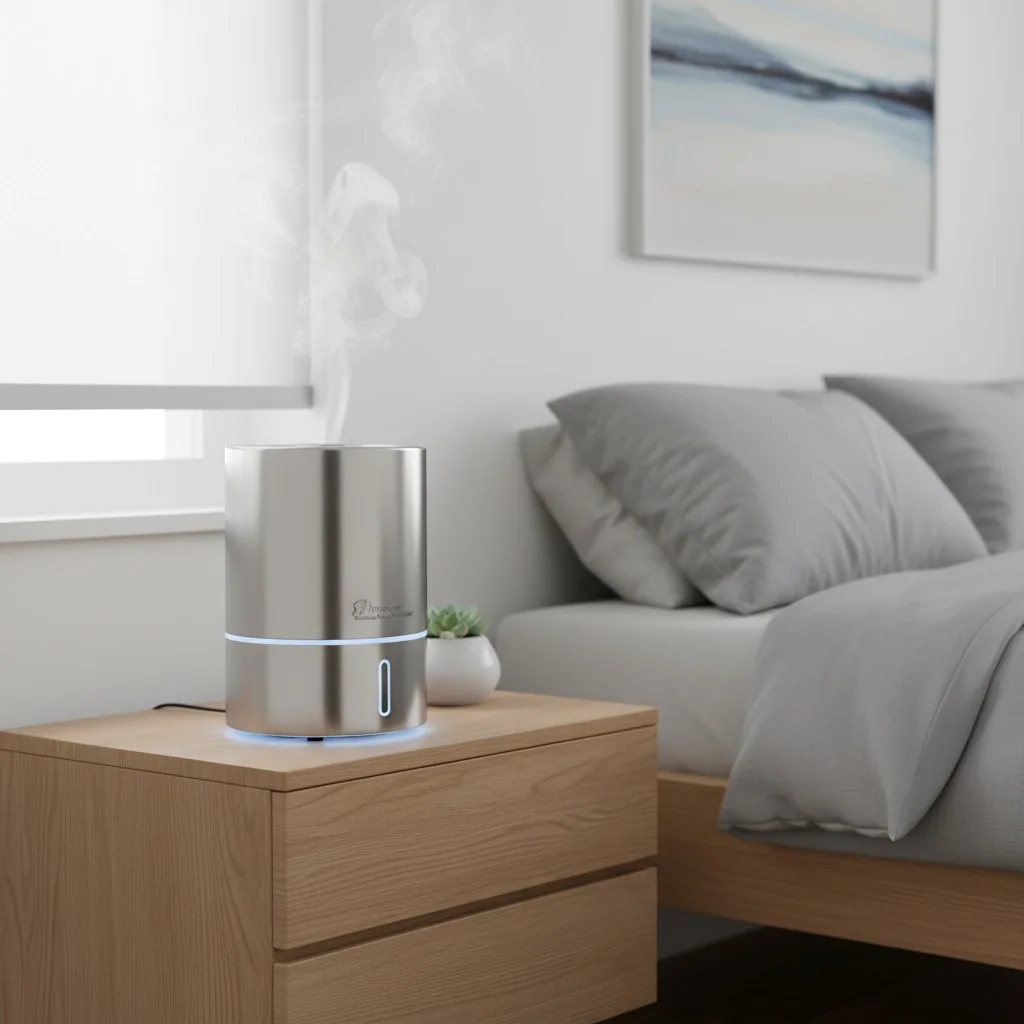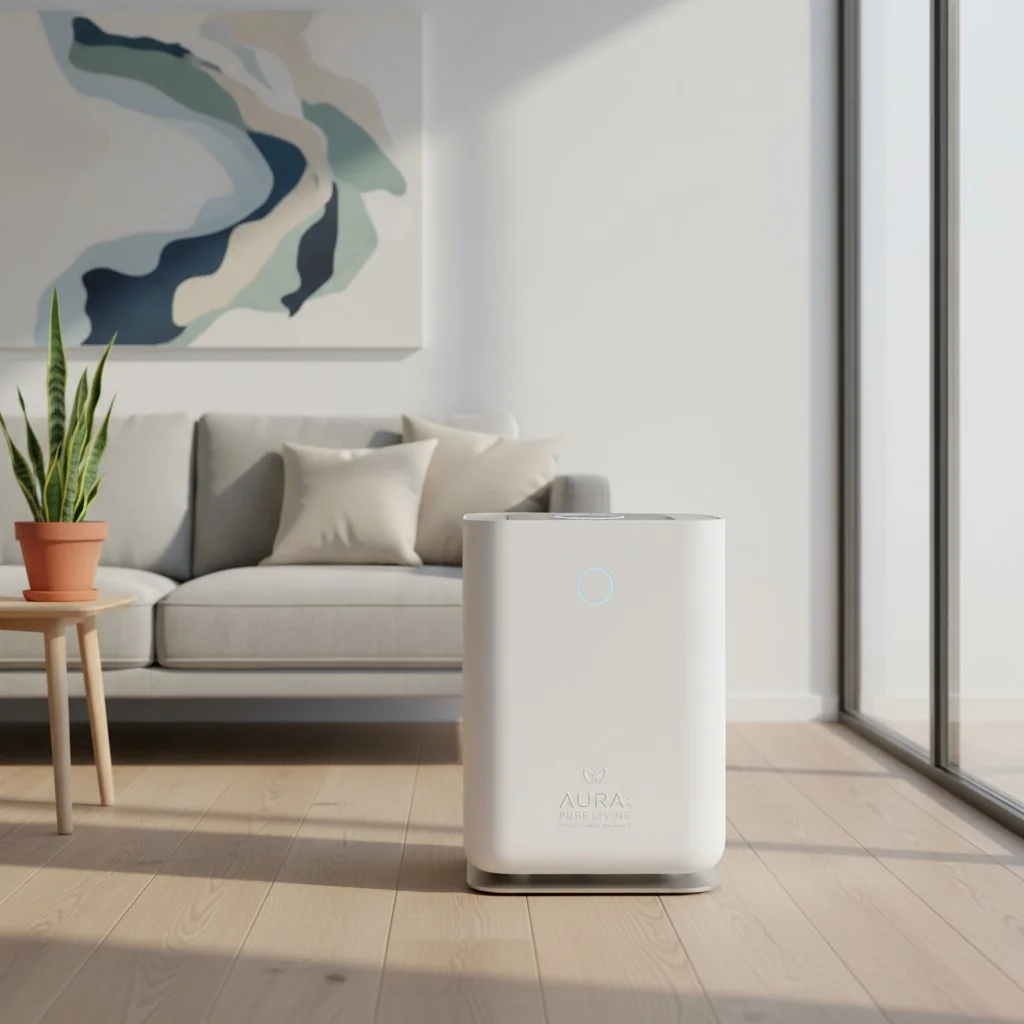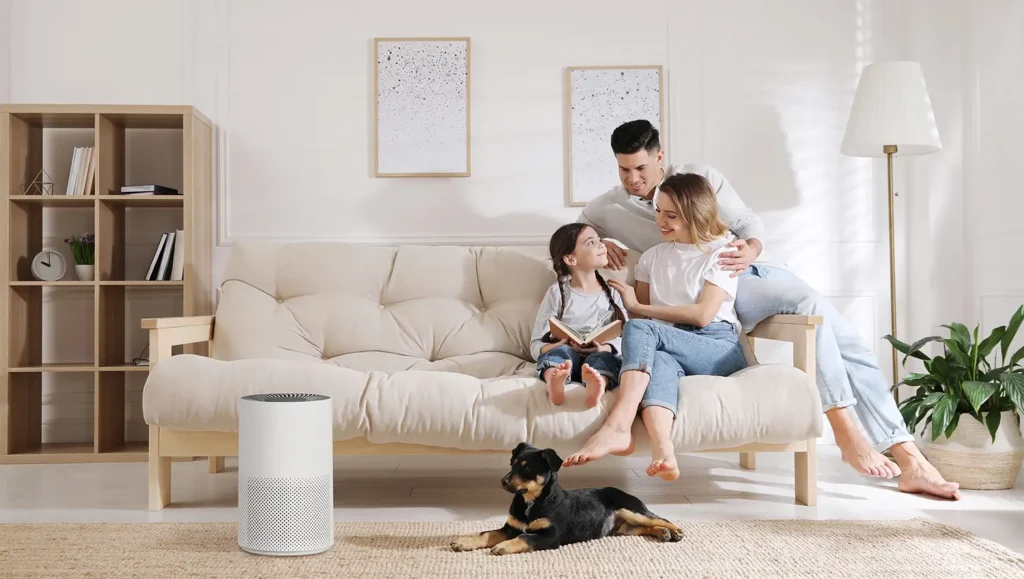L'emplacement correct des purificateurs d'air améliore considérablement leur capacité à éliminer les polluants en suspension dans l'air. Mais où faut-il vraiment les placer ? Quels sont les éléments à prendre en compte dans ce domaine ? Les réponses à ces questions se trouvent dans la suite de cet article.
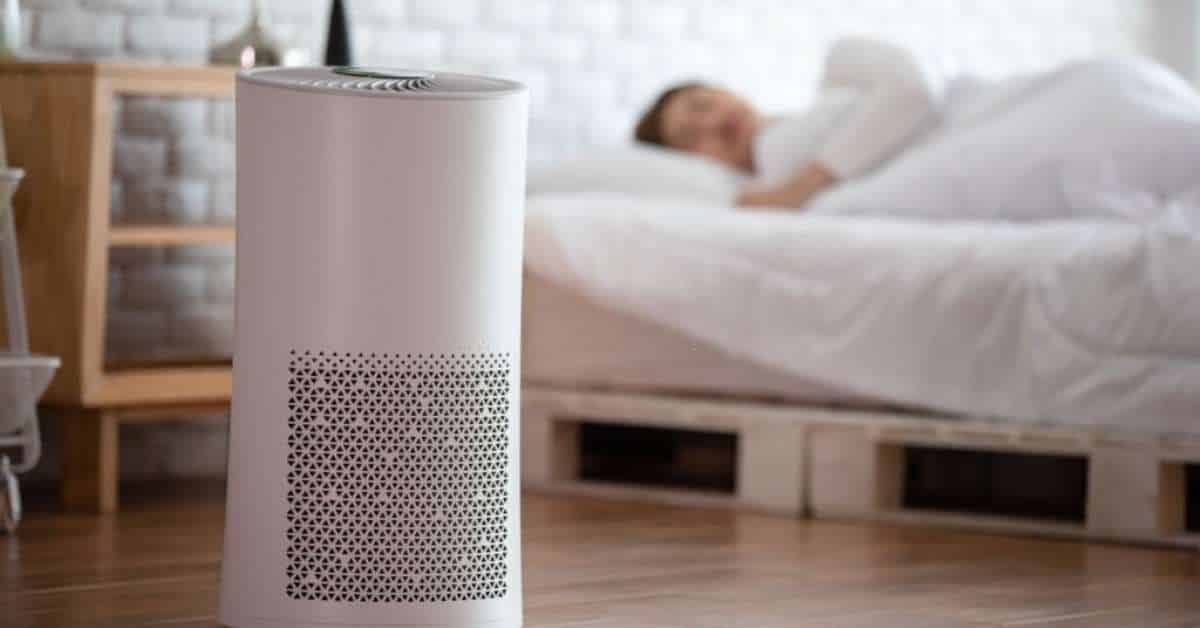
Source de l'image : iStockphoto
Les purificateurs d'air sont des outils essentiels pour améliorer la qualité de l'air intérieur. Ces purificateurs d'air sont conçus pour éliminer les contaminants en suspension dans l'air grâce à un système de filtration complet. En fonction des filtres, un purificateur d'air peut éliminer les allergènes, les agents pathogènes, les particules et les substances gazeuses. Les purificateurs d'air de haute qualité, tels que ceux fabriqué par HisoAirLes purificateurs d'air sont très efficaces pour éliminer les polluants en suspension dans l'air. Outre la qualité des purificateurs d'air, il faut savoir que leur emplacement joue un rôle dans leur performance globale.
Où placer les purificateurs d'air ? Les lieux qui ont besoin de purificateurs d'air
Obtenir un air plus pur et optimiser la consommation d'énergie de votre purificateur d'air, c'est vraiment la cerise sur le gâteau, surtout en cas de pandémie.
1. Accueil
2. Chambres d'hôpital
3. Le restaurant
4. Les salles de sport
5. Hôtels et bateaux de croisière
#1 Accueil

La maison est l'endroit où la plupart d'entre nous restent aujourd'hui, en particulier avec les fermetures permanentes, les scénarios de travail à domicile et d'études à domicile. Les appareils de désinfection de l'air contribuent à restaurer l'air vicié qui est recirculé à l'intérieur de votre maison. Ils réduisent également la pollution de l'air intérieur et nettoient l'air des bactéries, des poussières et des micro-organismes qui provoquent des irritations et des infections respiratoires.
Où placer un appareil d'assainissement de l'air dans votre maison ?
Voici les endroits où vous pouvez placer un purificateur d'air dans votre maison.
- Salle de séjour - où les gens se rassemblent et restent pendant de longues périodes.
- Salle à manger - l'origine des différentes odeurs et senteurs
- Chambre à coucher - pour réduire les irritations respiratoires et les déclencheurs d'asthme pendant votre sommeil
Dans quelle partie de la maison passez-vous le plus de temps ? Quelles sont les pièces que vous n'utilisez pas souvent ?
La règle de base est de placer un purificateur d'air dans la chambre à coucher et un autre dans le salon.
Si vous avez un studio, vous pouvez utiliser un purificateur d'air de bureau qui couvre la taille de votre logement.
#2 Hôpital

L'utilisation de systèmes de purification de l'air dans les installations de Covid19 peut réduire la propagation de la maladie en absorbant l'air infecté et en le purifiant.
Une machine à air frais performante peut nettoyer et filtrer l'air intérieur du coronavirus . Outre le port correct de masques et d'EPI, le lavage des mains et l'utilisation de produits de protection respiratoire. Désinfectants pour les mains à base d'alcool Les purificateurs d'air peuvent être ajoutés à la stratégie de lutte contre les infections dans les hôpitaux.
Où placer les purificateurs d'air dans les hôpitaux ?
Vous pouvez placer Purificateurs d'air haute performance de qualité hospitalière dans les salles des établissements de santé suivants pour diffuser et faire circuler de l'air exempt d'infection.
- à proximité de patients ou de chambres de patients infectés
- Sites générateurs d'aérosols ou salles AGP
- Véhicules fermés dans lesquels sont transportés des patients faisant l'objet d'une enquête (PUI)
- Chambres d'hôpital
- Salles de chirurgie
#3 Restaurant

Les restaurants sont environnements à haut risque où les gens enlèvent leur masque pour manger. Et même si ces les établissements prennent des précautions En ce qui concerne le respect de l'espacement des tables (6 pieds) et la réduction de la capacité, le CDC considère toujours la restauration sur place comme une activité à risque. activité à haut risque .
C'est ici que purificateurs d'air True HEPA puissants peuvent contribuer à réduire les polluants atmosphériques et les virus afin de protéger les convives et le personnel du restaurant contre l'infection par le coronavirus. Les purificateurs d'air HEPA peuvent constituer une stratégie de défense complémentaire pour les restaurants, au même titre que l'éloignement social, une ventilation adéquate et l'assainissement.
En outre, les purificateurs d'air dotés de filtres UV et de la technologie HEPA permettent de piéger et de tuer les micro-organismes à l'origine de maladies et d'offrir un environnement intérieur plus sûr aux convives.
#4 Gyms

Les salles de sport sont le lieu de nombreuses activités où l'on transpire et où l'on respire beaucoup. Ces établissements peuvent présenter un risque élevé pour les personnes, en particulier lorsqu'il n'y a pas de ventilation adéquate, car de l'air vicié et infecté peut y circuler.
Selon la Agence californienne de protection de l'environnement Les hommes et les femmes qui font de l'exercice absorbent 40 litres d'air de plus que ceux qui sont assis. Les centres de remise en forme ont tendance à être remplis de produits chimiques en suspension dans l'air, tels que le dioxyde de carbone, les poussières et le formaldéhyde. Et comme certaines salles de sport sont mal ventilées et mal filtrées, les niveaux de pollution de l'air y sont élevés.
Comme dans les restaurants, les salles d'entraînement ont besoin d'air frais à chaque minute, car les personnes consomment davantage d'air pendant les exercices.
Pour les centres d'entraînement et les gymnases, purificateurs pour la désinfection de l'air commercial peut réduire les particules fines et les gaz nocifs grâce à un filtre HEPA. Les COV (composés organiques volatils) sont également filtrés grâce au charbon actif.
Et notez que vous pouvez utiliser purificateurs d'air pour salles de sport si vous disposez d'une salle de sport interne où vous et votre famille faites des exercices en groupe.
Hôtel #5
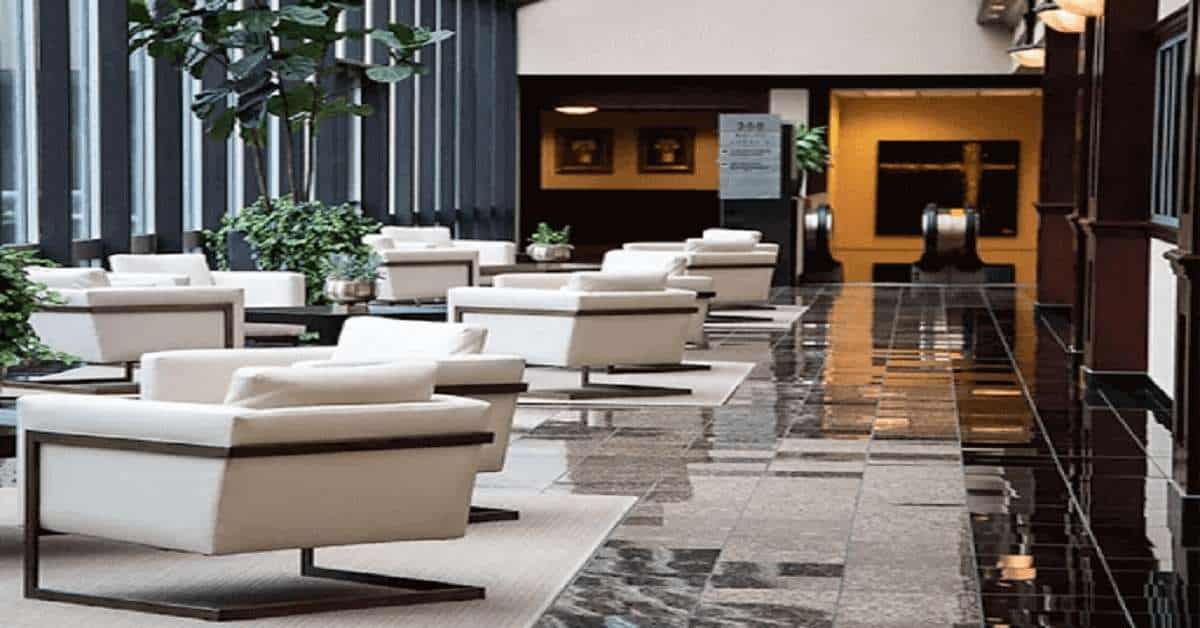
Les hôtels et les bateaux de croisière, qui sont des lieux de détente et de séjour pour les voyages d'affaires, peuvent aussi facilement propager le Covid-19. C'est pourquoi des purificateurs d'air HEPA de qualité hospitalière doivent être utilisés dans ces types d'endroits afin de renforcer la sécurité des personnes.
"Le meilleur service qu'un hôtel puisse offrir dans ces circonstances est la sécurité, en particulier dans les airs", a déclaré Carlos Sarmiento, directeur général de l'hôtel Paso del Norte au Texas.
Purificateurs d'air pour hôtels sont un plus pour un système CVC bien conçu qui offre une protection supplémentaire contre la fumée, les odeurs, la poussière et les allergènes.
L'emplacement d'un purificateur d'air est-il important ?
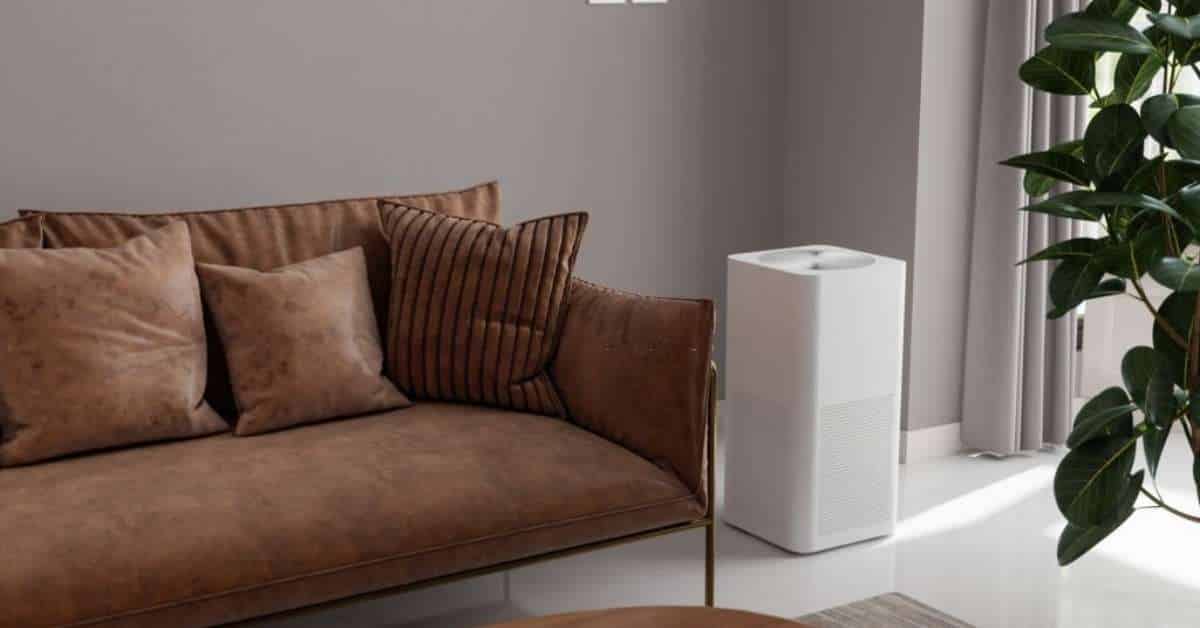
Source de l'image : iStockphoto
Oui. Certainement. Comme nous l'avons mentionné, l'emplacement du purificateur d'air améliore ou réduit ses performances. Si vous le placez correctement, il sera capable de traiter de grands volumes d'air dans un laps de temps donné. Même les purificateurs d'air les plus puissants doivent être placés à l'endroit le plus stratégique et le plus idéal possible.
Les purificateurs d'air mal placés, par exemple au milieu d'un meuble imposant, ne pourront jamais fonctionner correctement. Il n'absorbera pas suffisamment l'air, ce qui entraînera une prolifération continue des contaminants en suspension dans l'air.
Vous pouvez toujours maximiser le potentiel de ces purificateurs d'air en les plaçant aux bons endroits. C'est une stratégie simple mais efficace pour s'assurer que le purificateur d'air fait bien son travail !
Facteurs déterminant l'emplacement des purificateurs d'air
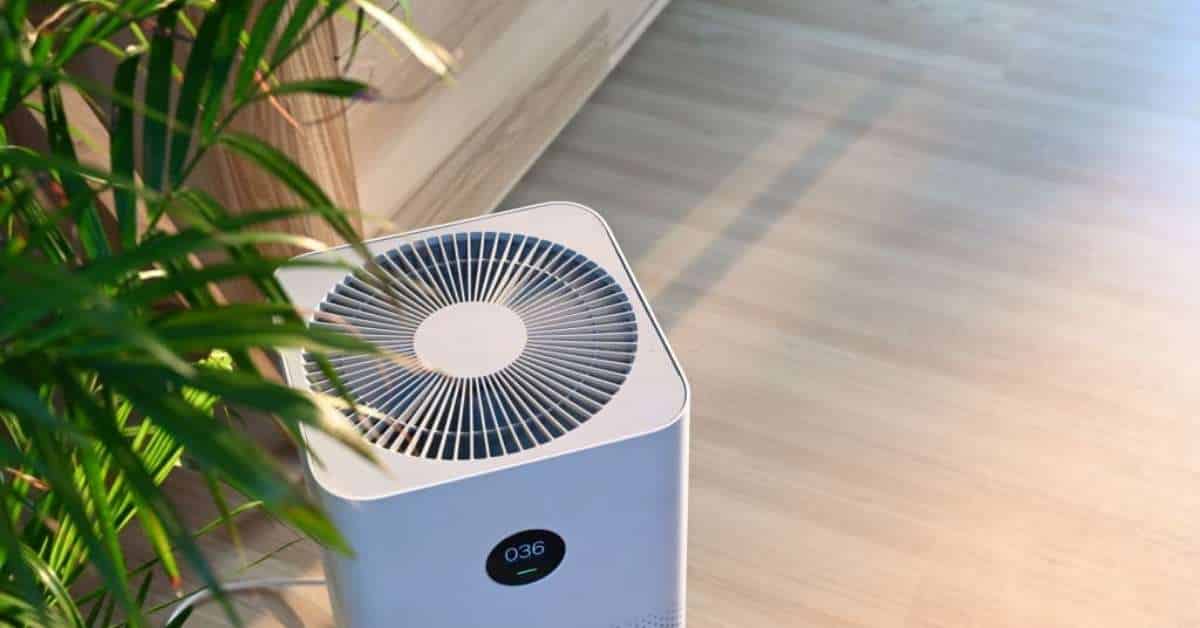
Source de l'image : iStockphoto
Certains aspects peuvent influer sur l'emplacement idéal d'un purificateur d'air dans les pièces et les espaces de vie. En particulier, outre les considérations physiques, vous devez également vous considérer, vous et les membres de votre foyer, comme les utilisateurs.
Parfois, ces purificateurs d'air peuvent provoquer des problèmes de sensibilité chez certaines personnes. S'il est vrai que ces purificateurs d'air sont généralement inoffensifs, il est néanmoins essentiel que vous fassiez preuve de prudence afin de ne pas rencontrer de problèmes lors de leur utilisation.
En particulier, vous devez évaluer votre niveau de besoins et votre sensibilité aux contaminants.
Yeux
Il est alarmant de constater que l'exposition aux polluants atmosphériques peut provoquer le syndrome de l'œil sec. Cette affection peut entraîner l'incapacité d'une personne à produire des larmes. À l'heure actuelle, on estime que plus de quatre millions de personnes (50 ans et plus) aux États-Unis sont confrontées à ce problème.
Selon la Agence américaine pour la protection de l'environnementLes polluants de l'air intérieur sont la cause la plus fréquente des problèmes de sécheresse oculaire. Si vous souffrez actuellement de ce problème, il est préférable d'installer un purificateur d'air à proximité de votre domicile ou dans les pièces où vous séjournez habituellement, telles que les chambres à coucher, la cuisine et le salon.
Nez
Bien entendu, c'est votre nez qui souffre le plus de ces contaminants intérieurs. Après tout, vous avez tendance à inhaler ces polluants en suspension dans l'air. Et sans purificateur d'air, vous finiriez par inhaler plus que ce que votre corps peut tolérer.
Certaines personnes ont un nez plus sensible que d'autres. Par conséquent, si un contaminant passe par leurs voies nasales, elles seront rapidement irritées. C'est pourquoi il est important que le purificateur d'air ne soit pas trop proche de vous. En effet, les purificateurs d'air absorbent les contaminants. S'il est trop proche de vous, vous absorberez également une grande quantité de particules en suspension dans l'air.
Comme toujours, veillez à ce que le purificateur d'air dispose d'un certain espace entre les objets et les personnes. Laissez-le faire son travail.
Réactions allergiques
Un facteur important dans l'emplacement du purificateur d'air est la susceptibilité des personnes aux réactions allergiques. Dans ce cas, il est préférable que le purificateur d'air soit présent dans les pièces où se trouvent ces allergènes potentiels.
Par exemple, ces purificateurs d'air doivent être présents dans les zones où il y a des portes et des fenêtres. Pendant saison des allergiesLes polluants extérieurs en suspension dans l'air, tels que le pollen, peuvent provoquer des poussées fréquentes et des crises d'allergie. Comme ces particules sont petites, il est facile pour elles de pénétrer dans vos espaces intérieurs. Un petit interstice dans la fenêtre ou la porte est une grande porte d'entrée pour ces contaminants microscopiques.
Les purificateurs d'air peuvent contrecarrer leurs effets potentiels sur l'organisme. Investissez dans des purificateurs d'air de grande taille pour assurer une purification plus rapide de l'air.
Conseils pour placer les purificateurs d'air à différents endroits
L'emplacement idéal des purificateurs d'air peut dépendre du type de pièce ou d'espace dont il s'agit. Qu'il s'agisse de votre chambre ou de votre salle de bains, vous devez vous assurer que ces purificateurs d'air sont placés correctement pour obtenir les résultats les plus bénéfiques. Voici un bref aperçu des purificateurs d'air idéaux que vous pouvez utiliser dans vos chambres, maisons et autres espaces de vie. Jetez-y un coup d'œil !
Aperçu rapide de l'emplacement des purificateurs d'air (avec des purificateurs d'air de marque recommandés)
| Lieux nécessitant des purificateurs d'air | Purificateur d'air recommandé | Couverture | CADR |
|---|---|---|---|
| Purificateur d'air pour le garage | HisoAir Modèle HA-1601 | 55-94 mètres carrés | 800 m3/h |
| Purificateur d'air pour plan d'étage ouvert | Modèle HisoAir HA-1968 | 90-180 mètres carrés | 1500 m3/h |
| Purificateur d'air pour petits espaces | Modèle HisoAir HA-139 | 28-48 mètres carrés | 400 m3/h |
| Purificateur d'air pour sous-sol | Modèle HisoAir HA-138 | 49-84 mètres carrés | 707 m3/h |
| Purificateur d'air pour salon de coiffure | Modèle HisoAir HA-139 | 28-48 mètres carrés | 400 m3/h |
| Purificateur d'air pour le bureau au travail | HisoAir Modèle HA-W400 | 30-50 mètres carrés | 444 m3/h |
| Purificateur d'air pour la cuisine | HisoAir Modèle HA-1601 | 55-94 mètres carrés | 800 m3/h |
| Purificateur d'air pour grand sous-sol | Modèle HisoAir HA-1968 | 90-180 mètres carrés | 1500 m3/h |
| Purificateur d'air pour salle de classe | Modèle HisoAir HA-1968 | 90-180 mètres carrés | 1500 m3/h |
| Purificateur d'air pour la chambre de bébé | Modèle HisoAir HA-138 | 49-84 mètres carrés | 707 m3/h |
| Purificateur d'air pour les dortoirs | Modèle HisoAir HA-139 | 28-48 mètres carrés | 400 m3/h |
Voitures
Votre garage a besoin d'un purificateur d'air car il n'est pas relié à un système de chauffage, de ventilation et de climatisation. Il est donc possible que la qualité de l'air y soit bien moins bonne que dans les autres parties de votre propriété. Les allergènes, la poussière, les bactéries et les virus y sont souvent présents. Pour installer un purificateur d'air dans votre garage, choisissez un endroit où il n'y a pas d'obstacles. Après tout, vous voulez que le flux d'air soit le plus important possible. En même temps, pensez à le placer près de la source des particules polluantes, telles que la poussière et la peinture en aérosol.
Plan d'étage ouvert
Dans un plan d'étage ouvert, l'espace est un problème. Dans la mesure du possible, vous ne devez choisir qu'un purificateur d'air dont la portée est suffisante. Par exemple, si le plan d'étage ouvert a une superficie de 700 mètres carrés, le purificateur d'air doit avoir une portée efficace d'au moins 700 mètres carrés.
De cette manière, vous serez suffisamment sûr de vous pour placer le purificateur d'air dans l'espace en question. Les plans d'étage ouverts comportent un minimum de pièces et d'espaces fermés. Vous pouvez donc placer le purificateur d'air au milieu de l'espace. Sans obstructions ni limitations, le purificateur d'air sera en mesure de capturer autant de contaminants que possible.
Si le plafond de la pièce est haut, vous pouvez placer le purificateur d'air dans une position surélevée.
Petits espaces
Dans un petit espace, la place que vous pouvez accorder à votre purificateur d'air est limitée. Supposons que la pièce soit encombrée et pleine d'objets. Cela signifie que vous aurez des difficultés à placer un objet potentiellement encombrant tel qu'un purificateur d'air.
Dans ce cas, vous avez besoin d'un purificateur d'air personnel et portable. Ces purificateurs d'air sont de construction compacte, de sorte que vous pouvez facilement les placer sur des meubles ou des plates-formes particulières, telles que des tables.
Veillez à ce que le purificateur d'air soit toujours placé au centre de la pièce ou dans un endroit où il n'y a pas d'obstacles. Vous pouvez le placer sur le côté, mais ne le poussez pas contre le mur.
Sous-sol
Les sous-sols sont généralement vides ou dépourvus d'objets. Si cette description correspond à votre situation, vous pouvez placer le purificateur d'air au milieu de la pièce. Il pourra ainsi absorber les moisissures qui flottent dans l'air. Les purificateurs d'air peuvent même éliminer l'odeur de renfermé dans cette zone.
Comme les sous-sols ont un plafond bas, il n'est pas nécessaire de placer le purificateur d'air en hauteur. Vous pouvez le poser sur le sol et le laisser faire son travail.
Si votre sous-sol présente des fuites, veillez à les réparer correctement. L'eau peut s'infiltrer dans le système du purificateur d'air et l'endommager. Si la réparation est encore en cours, assurez-vous simplement que l'appareil ne se trouve pas sur le chemin des fuites.
Salon de coiffure
Les salons de coiffure sont truffés de différents contaminants. Par exemple, l'acétone et le formaldéhyde contenus dans le vernis à ongles peuvent provoquer des irritations de la peau et des yeux. Les odeurs, les fumées et les vapeurs provenant des produits capillaires sont d'autres contaminants potentiels.
En raison des risques liés aux produits chimiques toxiques, il est nécessaire d'installer un purificateur d'air dans les salons de coiffure. Étant donné que les salons de coiffure sont généralement très fréquentés par le personnel et les clients, il est difficile de placer le purificateur d'air dans leur partie centrale. La meilleure solution consiste à placer le purificateur d'air dans un endroit où il ne sera pas dérangé par les gens.
Ne le placez pas directement dans les coins ou sur les murs. Cela empêcherait le purificateur d'air d'absorber et de redistribuer l'air dans la pièce. Si possible, placez le purificateur d'air là où il y a un excès de contaminants. Par exemple, si une zone du salon est déjà piquante en raison d'une odeur de produit chimique, le purificateur d'air devrait être placé à cet endroit.
Bureau
Il est courant que les bureaux soient équipés de purificateurs d'air. Comme nous l'avons mentionné, ces purificateurs d'air sont généralement compacts. Ils ne sont pas grands et leur débit d'air n'est pas aussi important que celui des purificateurs d'air de taille normale. En même temps, ils sont déjà efficaces pour la purification de l'air personnel. Tant que le purificateur d'air est petit, silencieux et sans résidus, vous pouvez le placer sur votre table de bureau.
Bien entendu, n'hésitez pas à ne pas le placer devant vous. Laissez-le sur le coin ou le bord de la table. Ainsi, il ne vous gênera pas pour faire vos courses. En même temps, veillez à ce qu'il ne se trouve pas à un endroit où vous pourriez accidentellement trébucher ou basculer.
Si vous ne pouvez pas faire autrement, vous pouvez envisager d'installer un purificateur d'air mural. Ils sont moins encombrants et offrent une plus grande couverture que les purificateurs d'air compacts.
Cuisine
Faire la cuisine, c'est agréable et savoureux jusqu'à ce que la vaisselle et les ustensiles de cuisine commencent à sentir mauvais. Cette situation odorante vous est certainement familière et vous voudriez vraiment mettre fin à un tel calvaire. Les purificateurs d'air sont efficaces pour éliminer les odeurs dans l'air, surtout s'ils sont équipés de filtres à charbon de haute qualité. Ils conviennent donc parfaitement à votre cuisine.
Dans ce cas, le purificateur d'air ne doit pas gêner les personnes qui se promènent et flânent. Vous ne devez jamais le placer au milieu. Vous ne devez pas non plus le placer sur le dessus des comptoirs. N'oubliez pas que les purificateurs d'air absorbent les contaminants. S'ils se trouvent à proximité des aliments ou des ingrédients que vous préparez, ils risquent d'être contaminés. Vous devez donc placer le purificateur d'air sur le sol. Il peut être placé près du mur, mais pas contre celui-ci.
Grand sous-sol
Comme nous l'avons mentionné, les sous-sols sont également propices à la prolifération des contaminants en suspension dans l'air. C'est particulièrement vrai s'il y a des problèmes de moisissures. Les purificateurs d'air permettent de contrôler efficacement ces polluants dans votre sous-sol. Si votre sous-sol est grand, vous avez simplement besoin d'un purificateur d'air plus grand avec un débit d'air pur élevé (CADR). Cela garantit que le purificateur d'air peut traiter l'air, quel que soit l'endroit où vous le placez.
Là encore, l'emplacement idéal du purificateur d'air doit être un endroit où il n'est pas obstrué par quoi que ce soit. L'idéal est de le placer au milieu afin qu'il puisse purifier et distribuer l'air de manière égale dans la pièce. Il n'y a pas de problème si le purificateur d'air est posé sur le sol, car les sous-sols n'ont pas de hauts plafonds.
Salle de classe
Les salles de classe et les écoles sont également truffées de contaminants en suspension dans l'air. Qu'il s'agisse de matériaux de construction, de poussière ou de pollen, ces éléments peuvent être inhalés par les enseignants et les élèves. Cela peut affecter leurs performances.
Dans ce contexte, le purificateur d'air doit être placé dans un endroit où il ne perturbe pas le processus d'apprentissage. Il est donc préférable que le purificateur d'air soit placé à l'arrière, là où on ne peut ni le voir ni l'entendre. Il n'est pas nécessaire de placer le purificateur d'air à l'avant. Il ne ferait que distraire l'enfant. Tant que le purificateur d'air est suffisamment puissant, il résoudra les problèmes de pollution de l'air dans votre salle de classe !
Chambre de bébé
Votre bébé est sensible aux maladies. En fait, une légère exposition à des contaminants tels que la poussière peut déjà le rendre malade ! Il est donc essentiel qu'un purificateur d'air soit présent dans votre chambre d'enfant. La règle d'or est que le purificateur d'air ne doit pas être trop proche du berceau de votre bébé. Outre le bruit, la proximité du purificateur d'air avec vos petits peut les exposer à des contaminants potentiels pendant que le purificateur absorbe l'air.
Le purificateur d'air doit être placé à une distance d'au moins trois à cinq pieds de votre bébé. Vous pouvez le placer sur une surface surélevée ou sur le sol. Cela devrait permettre à l'appareil de fonctionner en continu sans déranger votre bébé dans son sommeil.
Dortoirs
La qualité de l'air intérieur des dortoirs est souvent discutable. Après tout, ces dortoirs sont remplis de personnes de passage. S'ils ne sont pas nettoyés régulièrement, la poussière ne tardera pas à s'y accumuler. La poussière, les débris et les allergènes peuvent facilement pénétrer dans les dortoirs. Les portes et les fenêtres de leurs chambres et de leurs quartiers sont souvent ouvertes, de sorte que l'accumulation de polluants en suspension dans l'air dans ces zones n'est plus surprenante.
Gardez le purificateur d'air à l'intérieur de votre pièce. Vous pouvez le placer sur le sol ou sur une table (si le purificateur d'air est suffisamment petit et léger). Vous devez également évaluer la taille de votre chambre. Si elle est petite et exiguë, vous n'aurez d'autre choix que de recourir à un purificateur d'air compact. Si elle est suffisamment spacieuse, vous pouvez vous procurer un grand purificateur d'air et le placer là où il n'y a pas d'obstacles.
Ne placez pas le purificateur d'air près de la porte, car il pourrait être claqué. Le placer près des fenêtres est une bonne idée, surtout si vous avez tendance à les ouvrir régulièrement.
Dois-je installer un purificateur d'air dans chaque pièce ?
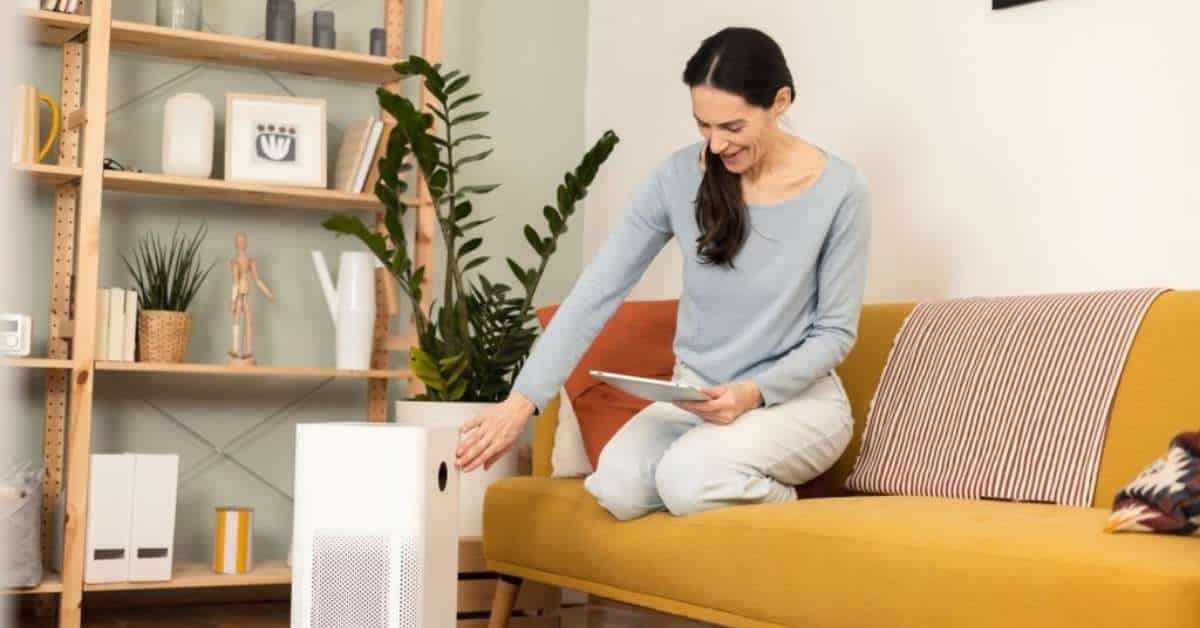
Source de l'image : iStockphoto
Pas nécessairement. Il existe des purificateurs d'air pour toute la maison qui sont capables de couvrir de grandes surfaces. Une seule unité de ces purificateurs d'air pour toute la maison peut facilement maintenir la propreté de l'air intérieur. Cependant, vous pouvez également opter pour un purificateur d'air pour chaque pièce de votre maison. C'est le cas lorsque vous ne disposez pas d'un purificateur d'air pour l'ensemble de la maison ou que vous souhaitez un purificateur d'air personnalisé pour certaines parties de votre maison (par exemple, les chambres à coucher et les cuisines).
Avant d'acheter des purificateurs d'air pour votre maison, votre hôpital ou votre restaurant, tenez compte des points suivants :
- Quelles sont les pièces occupées par la plupart des gens dans votre région qui pourraient avoir besoin d'un purificateur d'air pour prévenir la propagation de COVID-19 ?
- Y a-t-il des zones dans votre usine, votre maison ou votre établissement qui connaissent des problèmes de qualité de l'air tels que la poussière, la fumée et les produits chimiques ?
- Connaître la taille de la pièce (en mètres carrés) pour choisir les caractéristiques du purificateur d'air (CADR).
Dans quel sens placez-vous votre purificateur d'air ?
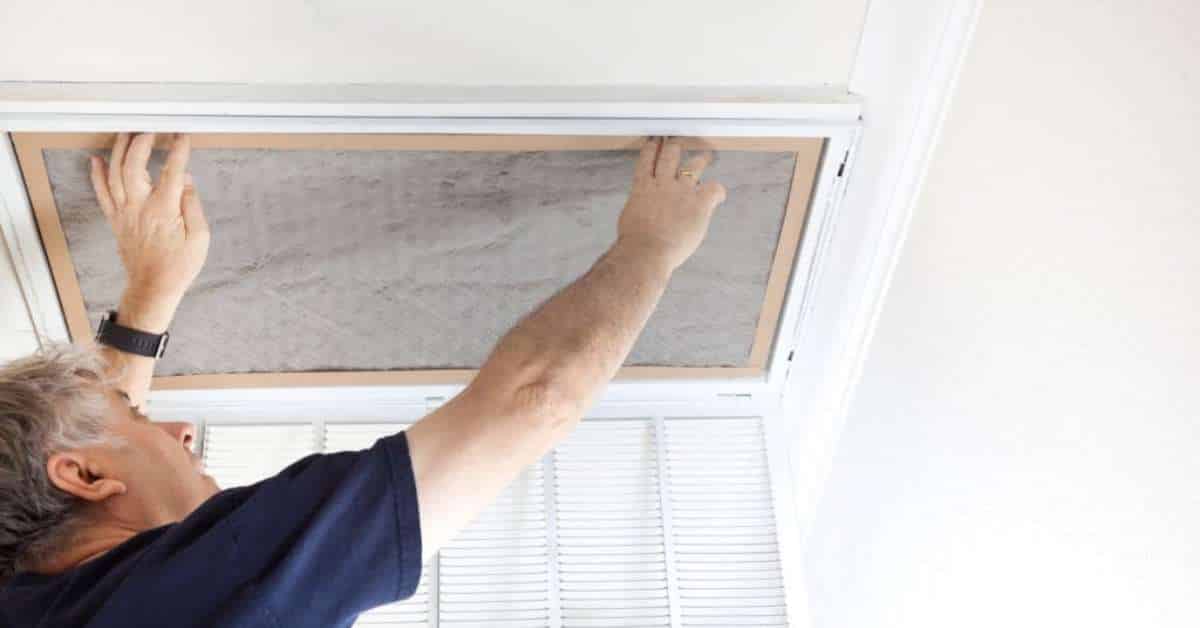
Source de l'image : iStockphoto
L'efficacité des purificateurs d'air dépend de l'endroit où vous allez les placer. Vous devez vous assurer qu'ils peuvent fonctionner correctement, sans entraves ni autres obstructions.
Par ailleurs, il convient de noter que les purificateurs d'air fonctionnent mieux s'ils sont placés dans une direction particulière. Voyons cela en détail :
Haut ou bas ?
Vous devez décider si le purificateur d'air sera placé en hauteur ou non. Dans certains cas, les purificateurs d'air doivent être placés en hauteur pour pouvoir absorber autant d'air que possible.
Certains purificateurs d'air ont un faible débit d'air. Vous ne pouvez donc pas supposer qu'ils peuvent absorber la totalité de l'air qui les entoure. Si votre maison présente un espace vertical élevé, il sera difficile pour ces petits purificateurs d'air d'absorber la totalité de l'air qui les entoure, purificateurs d'air portables afin de fournir une couverture complète.
À ce stade, il est évident que les purificateurs d'air qui ont une couverture plus étendue peuvent fournir des résultats plus efficaces en matière de purification de l'air. En effet, ils peuvent absorber autant d'air que possible.
Il existe des purificateurs d'air en forme de tour, dont le corps surélevé leur permet d'absorber et de distribuer l'air. Les purificateurs d'air de faible hauteur peuvent tout de même faire l'affaire, surtout si vous n'habitez pas dans des endroits où l'espace vertical est important.
A l'étage ou au rez-de-chaussée
C'est à vous de décider si un purificateur d'air doit être installé à l'étage ou au rez-de-chaussée. En général, si vous disposez d'un purificateur d'air pour toute la maison, vous n'aurez pas à faire face à ce dilemme. Mais pour les purificateurs d'air pour une seule pièce dont la couverture est limitée, vous devez décider en fonction de l'urgence.
La plupart du temps, les purificateurs d'air sont placés au rez-de-chaussée, car c'est là que se trouvent la plupart des zones à forte fréquentation humaine (c'est-à-dire les cuisines, les salles de séjour et les salles de bains). Si la présence de contaminants est plus élevée au rez-de-chaussée qu'à l'étage, il est logique d'y placer les purificateurs d'air.
Bien entendu, vous pouvez également installer un purificateur d'air à l'étage. Les chambres à coucher sont généralement propices à la prolifération de contaminants en suspension dans l'air, tels que les acariens et le pollen. Si vous avez des enfants ou des bébés et que leur chambre se trouve à l'étage, un purificateur d'air y est nécessaire.
Vous pouvez simplement installer un purificateur d'air dans chaque pièce de votre maison si vous pensez pouvoir en supporter le coût et si vous avez besoin d'une protection infaillible contre les polluants cachés dans l'air.
Sol ou table ?
Un purificateur d'air doit être placé sur le sol s'il est trop grand. Les appareils lourds et encombrants ne doivent jamais être posés sur une table, même s'ils sont solides. Ils provoqueraient des rayures et des bosses sur la table, ce qui n'est pas une bonne chose.
Vous ne pouvez installer un purificateur d'air que s'il s'agit d'un modèle portable et compact. Ces purificateurs d'air sont petits et ont une couverture limitée. Mais ils sont parfaits pour un usage personnel. Par exemple, si vous disposez d'une pièce réservée au travail dans votre maison, ces purificateurs d'air devraient trouver leur place sur une table.
Par ailleurs, les purificateurs d'air doivent être posés sur le sol. Ils peuvent ainsi fonctionner de manière stable. En outre, le fait de les poser sur le sol les empêche de tomber accidentellement. De petits mouvements peuvent les faire tomber sur le sol, ce qui peut causer de graves dommages à l'appareil.
Règles fondamentales pour l'installation de purificateurs d'air à l'intérieur
Nous savons tous que l'air vicié peut provoquer des allergies, de l'asthme et aggraver des maladies existantes. On ne peut pas se remettre rapidement d'une maladie si l'on est exposé à de l'air contaminé. Les purificateurs d'air filtrent les polluants présents dans l'air. Mais pour qu'ils donnent les meilleurs résultats, vous devez les placer à l'endroit le plus approprié possible. Pour commencer, voici quelques conseils pour choisir l'endroit idéal où placer ces purificateurs d'air.
#1 Éviter les obstacles et les espaces restreints

Les coins et les endroits où il y a beaucoup d'obstacles ne sont pas les meilleurs endroits pour placer votre purificateur d'air. Cela l'empêchera d'aspirer tout l'air contaminé en peu de temps. Vous ne devez jamais placer un purificateur d'air dans un endroit où des objets peuvent bloquer le flux d'air. Il est donc déconseillé de le placer au milieu d'un meuble imposant, derrière une armoire, un grand fauteuil ou un canapé. Dans la mesure du possible, il doit y avoir au moins trois ou quatre pieds d'espace libre de chaque côté du purificateur d'air. De cette manière, vous pouvez garantir que le flux d'air ne sera jamais entravé. Bien entendu, plus vous laissez d'espace à ces purificateurs d'air, plus ils sont efficaces pour éliminer les contaminants nocifs. Cela est particulièrement vrai si vous avez un petit purificateur d'air personnel. Ces purificateurs d'air ont un faible débit d'air, il faut donc leur laisser le plus d'espace possible.
Les meilleurs endroits pour installer un purificateur d'air dans votre maison :
- Près des côtés du mur
- Près de la porte
- Près de votre commode
- Côté opposé au téléviseur
Conseil #2. Placez-la près de votre porte
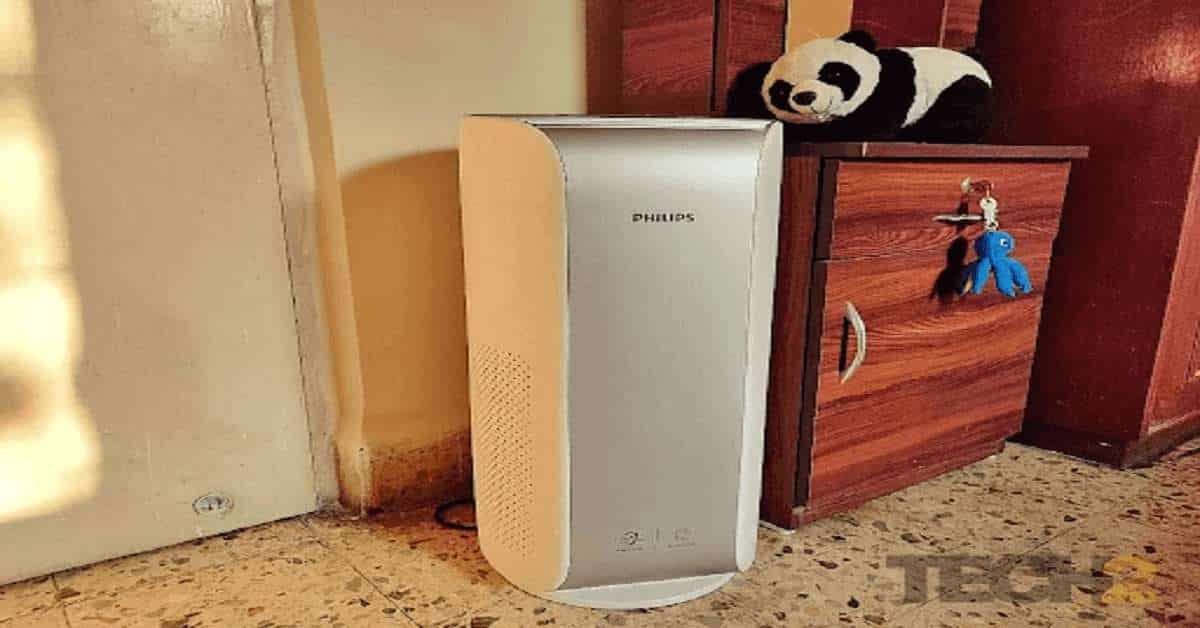
Vous pouvez placer le purificateur d'air près de votre porte et de vos fenêtres, d'où proviennent la plupart des poussières et de la pollution. Dès que l'air pollué pénètre dans votre maison ou votre espace, il est en grande partie filtré par le purificateur d'air avant même d'atteindre votre nez.
Conseil #3. Notez la taille de votre pièce par rapport à la couverture de votre purificateur d'air.
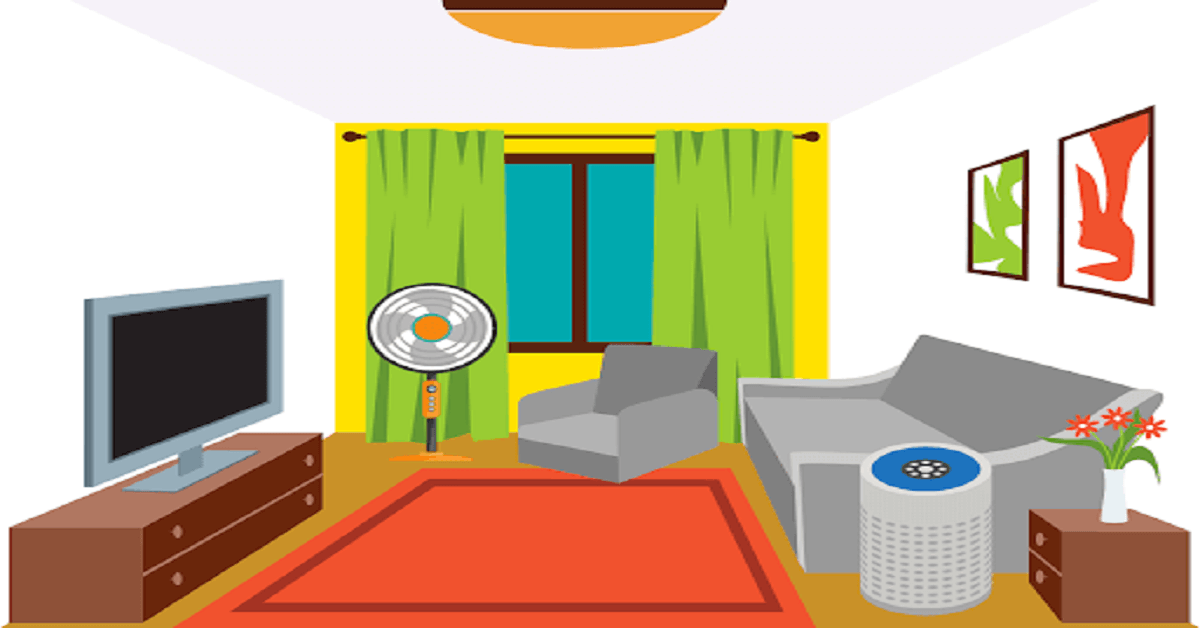
Il existe deux règles d'or pour choisir un purificateur d'air :
- Ne choisissez pas un grand purificateur d'air pour une petite pièce,
- Ne choisissez pas un petit purificateur d'air de bureau pour une grande pièce
Si vous avez envie d'utiliser un grand purificateur d'air pour une petite pièce afin de vous assurer que l'air est parfaitement propre, réfléchissez-y à deux fois. Il ne sert à rien de faire recirculer un air de qualité une fois qu'il a été filtré et cela ne fera qu'alourdir vos factures.
Par ailleurs, si vous utilisez un petit purificateur d'air, comme un modèle de bureau, pour nettoyer une grande pièce, cela ne fonctionnera pas non plus. L'air pollué restera dans la pièce.
#4 Loin des appareils électroniques
Il est parfois tentant de placer ces purificateurs d'air à proximité de vos appareils électroniques préférés. Mais ne le faites pas. Sinon, il y aurait un problème avec le fonctionnement de ces appareils. Les purificateurs d'air, en particulier les purificateurs numériques, peuvent provoquer des interférences sur les radios, les télévisions et les ordinateurs. Ils peuvent même perturber la connectivité WiFi de ces appareils, surtout si les purificateurs d'air sont trop proches. Il doit y avoir une distance d'au moins 1,5 mètre entre votre purificateur d'air et ces appareils électroniques. Plus la distance est grande, mieux c'est.
#5 Éviter les zones à forte humidité
Il y a un problème si vous placez un purificateur d'air dans des endroits où l'humidité est élevée. Un taux d'humidité élevé signifie que l'air est lourd. Et c'est mauvais pour les purificateurs d'air. L'une des raisons est que le purificateur d'air doit travailler davantage pour absorber l'air lourd. Une autre raison est que l'air lourd peut interférer avec l'efficacité du filtre HEPA. Les salles de bains, les cuisines et les sous-sols sont des endroits où l'humidité est élevée. L'eau est un élément constant dans ces endroits. Bien entendu, ils sont propices à la production de moisissures, qui sont une forme de polluant intérieur. Outre l'utilisation d'un purificateur d'air, il est donc nécessaire de placer un déshumidificateur dans ces lieux. Ces déshumidificateurs aident à réguler l'humidité excessive.
#6 Placer le purificateur d'air Près des polluants courants
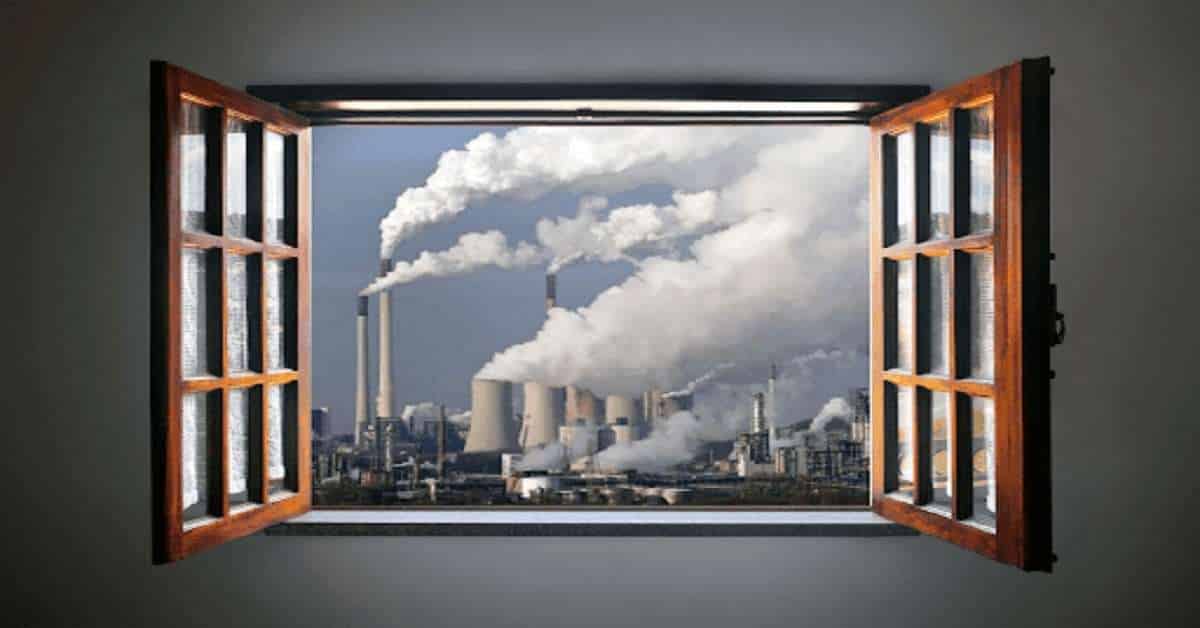
Considérez vos purificateurs d'air comme vos défenseurs. Si vous êtes attaqué, vous voulez qu'ils soient en première ligne. Il est donc logique de placer ces purificateurs d'air dans les zones où les polluants sont présents. Par exemple, si votre animal de compagnie joue dans votre salon, le purificateur d'air doit s'y trouver. Votre chambre à coucher contient-elle des acariens ? Un purificateur d'air doit également être présent dans cette pièce. Vous pensez que votre sous-sol a des problèmes de moisissures ? Il mérite le service d'un purificateur d'air. Vous pouvez envisager de placer vos purificateurs d'air sur vos fenêtres, surtout si vous avez tendance à les ouvrir pendant quelques heures pour faire circuler l'air. De cette façon, l'entrée de contaminants extérieurs sera minimisée. Certains endroits de votre quartier ou de votre établissement reçoivent plus de poussière et de pollution que d'autres. Déterminez l'endroit d'où proviennent le plus probablement les contaminants en suspension dans l'air et placez votre purificateur d'air à proximité de cet endroit. Votre purificateur d'air commercial pourra ainsi piéger les contaminants avant qu'ils n'atteignent vos poumons.
#7 Placez-la dans des endroits dégageant des odeurs désagréables

Le bac à litière de votre chat peut être l'une des sources de pollution de votre maison, car il dégage des odeurs nauséabondes. D'autres espaces qui dégagent des odeurs désagréables peuvent être les zones fumeurs, près de la salle de séjour ou de la salle à manger.
Si vous avez des animaux domestiques à la maison, un purificateur d'air est certainement utile, non seulement pour piéger les odeurs, mais aussi les squames des animaux.
#8 Placez-le à l'entrée d'air de votre système de chauffage, de ventilation et de climatisation (CVC)
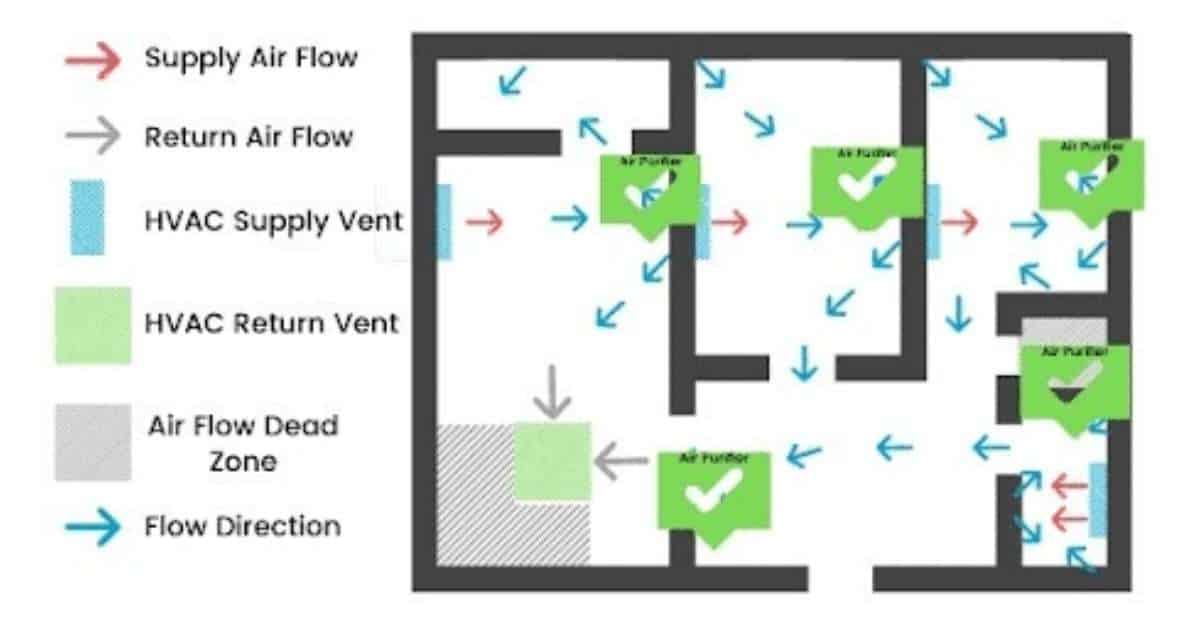
Pour optimiser considérablement l'utilisation de votre purificateur d'air HEPA, vous pouvez le placer à l'endroit suivant votre système CVC aspire l'air. Cela permet de réduire la pollution de l'air et les particules ultrafines qui sont aspirées dans votre système de chauffage, de ventilation et de climatisation. Placez l'appareil de manière à ce qu'il ne provoque pas de turbulences avec les bouches d'aération, comme le montre l'image ci-dessus.
Un système CVC n'est pas vraiment efficace pour purifier l'air intérieur pollué. Un purificateur d'air placé à l'entrée du système permet donc de diffuser un air plus pur dans la pièce. Il existe également des unités de purification de l'air qui sont pré-intégrés dans le système CVC qui a le même principe. Des purificateurs d'air puissants, tels que Épurateurs d'air vérifiés par l'AHAMCes systèmes sont très efficaces pour absorber l'air. Ces systèmes sont dotés de moteurs et de ventilateurs puissants qui leur permettent d'aspirer l'air efficacement. Vous pouvez déterminer si un purificateur d'air dispose d'un flux d'air puissant grâce à son taux de distribution d'air pur.
Plus le chiffre est élevé, plus le purificateur d'air est puissant. Malgré cela, vous devriez toujours placer un purificateur d'air dans des endroits où la circulation de l'air est bonne. Cela doublerait le rendement du purificateur d'air. Il peut éliminer les contaminants en suspension dans l'air plus rapidement et en plus grande quantité. Vous devez donc placer le purificateur d'air au niveau des fenêtres, des portes et des murs. À ces endroits, l'air a tendance à se déplacer beaucoup.
Autres sujets de préoccupation
Quel est le sens de montage du filtre à air dans le mur ?

Source de l'image : iStockphoto
Supposons que votre maison soit équipée de filtres intégrés. C'est une bonne chose. Cela signifie qu'un mécanisme supplémentaire vous protège des contaminants en suspension dans l'air. Bien sûr, cela signifie aussi que vous devez changer le filtre de temps en temps. Après tout, ils fonctionnent de la même manière que les purificateurs d'air.
Lors de l'insertion d'un filtre à air neufCherchez sa flèche. Cette flèche doit être orientée vers le filtre à air. Elle ne doit pas être orientée vers le conduit de reprise d'air ; ce dernier est celui qui transfère l'air qui sera refroidi ou chauffé.
Si l'appareil est placé contre un mur, la flèche du filtre doit être orientée directement vers le mur. Si l'appareil est fixé au plafond, la flèche doit également être orientée vers le plafond. La plupart des filtres à air comportent des flèches qui guident les utilisateurs lors de leur installation. Si vous ne la trouvez pas, cherchez encore. Recherchez les côtés, car la flèche peut y être imprimée.
Combien de temps dois-je laisser mon purificateur d'air en marche ?
Cela dépend. Après tout, les purificateurs d'air sont conçus pour fonctionner en continu. Même si vous ne les éteignez pas, il n'y a pas de problème. En fait, il est recommandé que ces purificateurs d'air fonctionnent en continu dans les zones et les propriétés qui connaissent de graves problèmes de pollution de l'air intérieur.
Cependant, vous pouvez toujours éteindre le purificateur d'air. Vous pouvez l'éteindre si vous n'êtes pas chez vous. Vous pouvez également le faire si vous dormez ou s'il n'y a personne dans la maison.
Mais si vous pensez que les polluants en suspension dans l'air sont persistants dans vos espaces de vie, nous vous suggérons de laisser le purificateur d'air en marche.
Faut-il faire fonctionner un purificateur d'air lorsque les fenêtres sont ouvertes ?
Il est évident que les purificateurs d'air fonctionnent mieux s'il n'y a pas d'interstices ou de joints ouverts. Cela signifie que ces appareils sont plus efficaces lorsque les fenêtres et les portes ne sont pas ouvertes. En les fermant, vous réduisez le risque que des polluants extérieurs pénètrent dans votre maison.
Mais bien sûr, il est impossible de les garder fermées tout le temps, n'est-ce pas ? Pour une raison ou une autre, nous devons ouvrir nos fenêtres. Dans ce cas, faut-il laisser fonctionner le purificateur d'air ?
En fait, vous avez le droit de le faire. Mais n'oubliez pas que l'efficacité du purificateur d'air sera réduite s'il fonctionne lorsque les fenêtres sont ouvertes. La meilleure solution consiste donc à garder les fenêtres fermées lorsque vous utilisez un purificateur d'air.
Si vous tenez à utiliser un purificateur d'air dans une pièce dont les fenêtres sont ouvertes, assurez-vous que le purificateur d'air a une couverture étendue. Plus précisément, cela signifie que le purificateur d'air doit avoir une couverture effective plus large que la superficie réelle de votre pièce. Par exemple, si la pièce a une superficie de 300 mètres carrés, le purificateur d'air doit pouvoir couvrir au moins 400 mètres carrés !
Conclusion
Les purificateurs d'air sont des moyens efficaces d'améliorer et de maintenir la qualité de l'air dans votre maison. Ils peuvent éliminer les causes courantes de problèmes respiratoires, telles que la poussière, la saleté, les allergènes et les agents pathogènes.
À eux seuls, ils peuvent accomplir cette tâche avec efficacité. Cependant, vous pouvez maximiser leurs performances en les plaçant au bon endroit. Un placement stratégique permet d'optimiser le flux d'air et la capacité à capturer les contaminants flottants.
Si vous avez une grande maison, un centre médical ou un établissement, vous devez déterminer les zones dans lesquelles vous devez placer des purificateurs d'air. Vous protégerez ainsi vos clients ou votre famille d'une infection par le coronavirus ou d'une maladie due à la poussière, aux produits chimiques, aux pollens et aux allergènes.
| Purificateurs d'air pour différents types de pièces | Purificateurs d'air recommandés pour différents polluants | Couverture | CADR | Guide pratique |
|---|---|---|---|---|
| Hôpitaux | HisoAir Modèle HA-1601(Purificateurs d'air de qualité médicale) | 55-94 mètres carrés | 800 m3/h | spores de moisissures dans l'air |
| Zones commerciales | Modèle HisoAir HA-1968 | 90-180 mètres carrés | 1500 m3/h | odeur de moisi dans le sous-sol |
| Voiture et ordures | Modèle HisoAir HA-139 | 28-48 mètres carrés | 400 m3/h | radon odeur de fumée |
| Bureau et espace de travail | HisoAir Modèle HA-W400 | 30-50 mètres carrés | 444 m3/h | Poussière flottant dans l'air |
| Salon de coiffure Salon de manucure |
Modèle HisoAir HA-139 | 28-48 mètres carrés | 400 m3/h | allergies saisonnières |
| Maison et cuisine | HisoAir Modèle HA-1601 (Purificateurs d'air pour les moisissures) | 55-94 mètres carrés | 800 m3/h | Formaldéhyde Odeur de cuisson dans la cuisine |
| Chambre d'hôtel | HisoAir Modèle HA-1968 (Purificateurs d'air pour vocs & Formaldéhyde) | 90-180 mètres carrés | 1500 m3/h | Poussière |
| École et salle de classe | HisoAir Modèle HA-1968 (Purificateurs d'air pour la fumée) | 90-180 mètres carrés | 1500 m3/h | odeur de mauvaise herbe |
| Salle de séjour | Modèle HisoAir HA-139 | 28-48 mètres carrés | 400 m3/h | Odeurs d'animaux domestiques allergies aux chats naturellement |
Avez-vous besoin de purificateurs d'air en vrac pour votre entreprise ? HisoAir est un fabricant chinois de purificateurs d'air OEM/ODM qui propose purificateurs d'air haute performance à des fins médicales et industrielles. Nous avons également purificateurs d'air de bureau pour les maisons, les appartements et les petites pièces.


